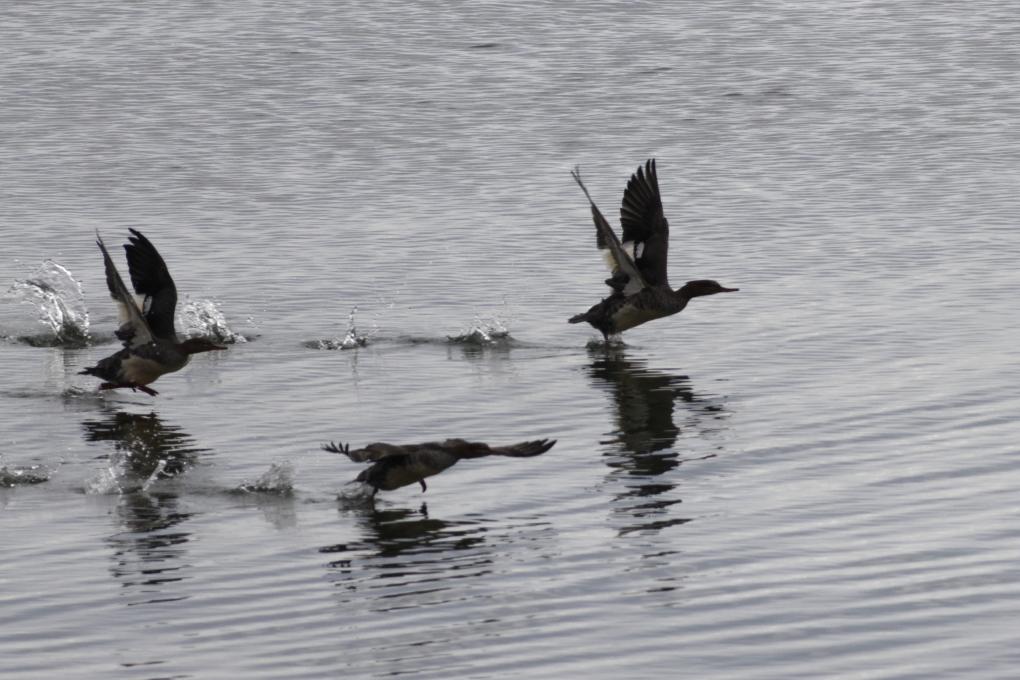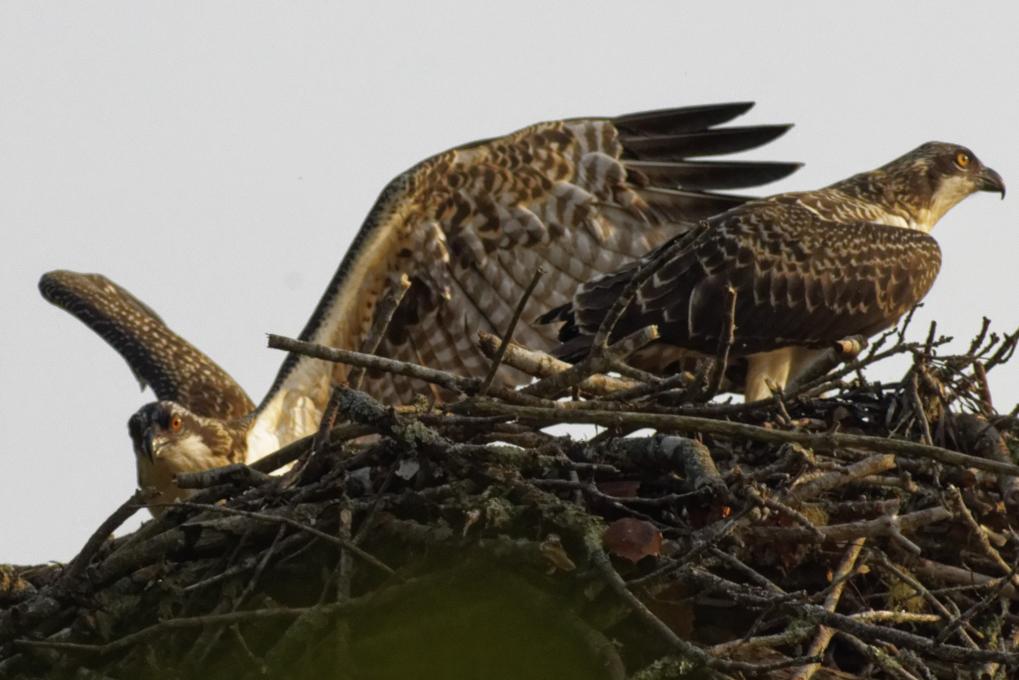Ronald
Forum Replies Created
Viewing 3 posts - 1 through 3 (of 3 total)
-
RonaldParticipantThe two images below are of mergansers on their way south. The light was amazing difficult to master. Note I have not done any editing as yet the purpose of the images was to capture their "walking on water" as they began to take off. There is a sequence of 8 images from the birds swimming to taking off. In some ways it is that process I wanted to capture. Let me explain how I edit and curate and then share my images. The first two start when I set up my camera in the field. I use a CANON EOS 90D mounted on a tripod with a 400mm telephoto lens with a 2x extender. I use manual and shoot raw. I collect the images on a 128 gb card with reach at 160 and write at 90. I use one card for each project and save the cards in a protected file as well as storing the contents in several places on the computer. I have a unique file for each day and I rename the CANON file format such as OSPREYAUG31st and then store the file in a file with a monthly title, such OSPREYAUG2021. My first editing starts when I am out of the field and I go through the images on the camera; because I use RAW I can not crop but I do use the magnification tool to look at what I might find. I do remove those that are obviously problems such as an image of the sky or the ground as a result of moving the camera on the tripod. In a two hour period I may have as many as 200 images. I know that this is all to great but I do go back and examine specific images; this is critical since I am monitoring the birds, usually the same pair, over the years. I have kicked myself all too many times for purging because an image did not make sense at the moment. After many years of Lightroom I switched to DxO Photolab 4with the Nik Collection about four years ago. I remain a minimalist from days of black and white film in the darkroom. Burning, dodging and cropping represent my basic procedures. Sometimes I go to Photoshop as discussed in this course. My philosophy is to allow nature to say what it is. Many friends comment "if only you could rid of the leaves" this would be a great picture. My approach is produce what I find and what I see not what I would like to see. There are few places where more editing takes place especially with bird eyes, for example, younger ospreys have different coloration than older ones. Photolab 4 has a wonderful transfer system from its files to a variety of places. When I use the Nik Collection I save in tiff format which then allows me to go back and reedit an image easily. It also has a simple project function. In all cases, I add my name, copyright and key words for sorting images. My biggest challenge is managing lots of large files; this summer I took over 3,000 images. As I move toward sharing images I print 4" 6" prints and file them with cards containing relevant information. I use a old fashioned card file. This gets me away from the computer and to the extent I share prints even at this scale I have some idea of what the final product will be. Yes, I reset color on screens but I work with two computers and a monitor all which can have varying light condition. The darkroom approach is what I know and it only is missing the smell of chemicals. I generally share single images or one or two as seen here. Often I include them in cards and have over the years published small books for gifts. I approach photography as exploration and discovery like me heroes of the polar world.


-
RonaldParticipantI have spent nearly four years under an osprey nest on the coast of Maine near Freeport. I start when they arrive often in late March and spend about 6 hours a week taking images. I record everything from the reconstruction of the nest, courting and mating, the development of the chicks and fledglings and finally their departure in late September. The timing of the eggs and birth of the chicks is difficult to know especially when I can only photograph through a dense forest canopy well below the nest which is about 60 feet above where I stand. The critical time is when the fledglings begin to try their wings which is about five weeks after they are born. They grow quickly in Maine because of the rich fishing waters and the general lack of predators. My interest has been trying to estimate their first flights, then their first successful fishing, and finally their departure. Research to date provide insight into how and when their feathers develop. Early on and through most of their time they are mottled. Although it is difficult to determine the sex of the birds, the young female fledglings begin to show the development of the "osprey necklace" near the time of their leaving. In the image below it is difficult to see that but the osprey on the left appears to be the female. The image was taken on July 22nd 2021 and by the time I took the last image of her, the feather remained mottled but the necklace was starting to take full shape. Her mother who I have followed for two years has a pronounced necklace in size and color. My last image of this bird on September 30th 2021 showed that; as well she was almost as large as the mother. Comparison of images suggests that she inherited the strong necklace. Mature females I discover begin their migration earlier than the males and the year's younger adults. Although much has been written about ospreys in the past few years, there are substantial gaps regarding the maturation of the young. Some state that the male helps the young fish or look for fish, yet I have seen immature ospreys such as the one on the left successfully bring fish back to eat. Unlike when the adults feed the young, immature ospreys search out places in trees to consume the fish. Also, I have observed that while the adults bring headless fish back to the nests, the young bring entire fish back to their roosts. In both cases, the head is eaten first. I am certainly far from being an ornithologist although I have a scientific back ground, much of what I have written comes from extensive observation of a pair of ospreys occupying a nest over four years. The male appears to be the same but there has been two females. While I consult widely, my research is my own based on field observation. I would like to be able to compare my observations with those of others but that is difficult.in reply to: Practice Understanding Birds for Better Photos #838552
-
RonaldParticipant
 in reply to: Practice Understanding Birds for Better Photos #838548
in reply to: Practice Understanding Birds for Better Photos #838548
Viewing 3 posts - 1 through 3 (of 3 total)


